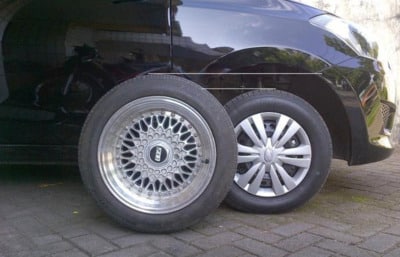
Changing rims is a common practice among automotive enthusiasts. Car owners are no exception, changing rims is not wrong, as long as it is still in the right and safe procedure.
The most common mistake when changing car rims is to size the diameter too large.
Larger diameter rims are automatically heavier than standard ones, resulting in a heavier engine load.
As a result, acceleration is reduced and fuel consumption becomes more wasteful.
Large rims tend to extend the braking distance as the brakes get more load than they should.
Large and wide rims also have the effect of shortening the life of components such as tie rod, ball joint, or the fender.
The use of large rims also relatively recommends the use of thin-profile tires.
The side effect of thin-profile tires is that the ride becomes harder and the wheels are more prone to swaying when hit by potholes.
Large rims on average have a larger width, where the tire tread size also becomes wider.
Wide tire treads make the car prone to aquaplaning, aka losing contact between the tires and the asphalt when crossing puddles.
Large rims that are too wide can also reduce comfort, for example the rim rubs against the fender when the car is swinging.
Therefore, if you want to replace the rim, you should first consult with a rim shop or a more experienced friend to find out the most appropriate calculation.











